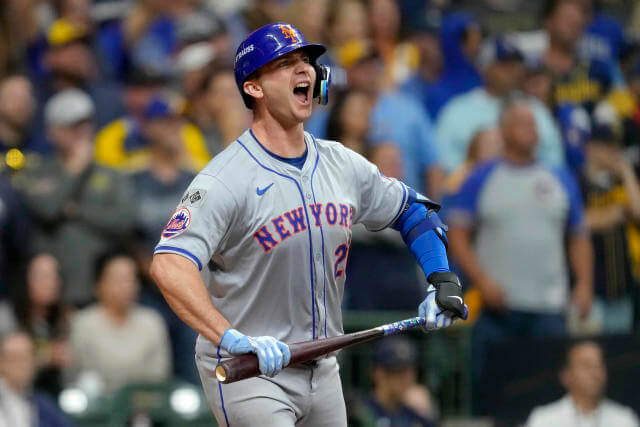The New York Mets’ signing of Sean Manaea to a two-year, $75 million contract represents a significant investment in the pitching department, but its value and long-term impact warrant careful consideration.
Manaea, a left-handed pitcher, has shown flashes of brilliance throughout his career, most notably in his 2021 season with the Oakland Athletics, where he posted a 3.91 ERA and 194 strikeouts in 179.1 innings. However, consistency has been a problem. Despite his potential, Manaea has struggled with command at times, and his ERA has fluctuated, peaking above 4.00 in several seasons. In 2023, with the San Diego Padres, Manaea experienced his worst year yet, registering a 5.87 ERA. His 2023 campaign included struggles with home runs and limiting hard contact, raising concerns about his ability to thrive in the competitive National League East.
For the Mets, this deal is a gamble, as they hope to unlock the best version of Manaea. His stuff—highlighted by a mid-90s fastball and a devastating slider—remains formidable, and if he can regain his 2021 form, he could provide a significant boost to a rotation already anchored by the likes of Max Scherzer and Justin Verlander. However, if Manaea continues his downward trend, the Mets could be left with a high-priced back-end starter, limiting the return on their investment.
At $75 million over two years, Manaea’s contract averages $37.5 million per season. This places him in a high echelon of contracts, despite his inconsistency. This level of compensation is generally reserved for proven frontline starters, which Manaea has yet to establish himself as consistently. Comparatively, pitchers with similar upside but more established track records, such as Carlos Rodón or Chris Bassitt, have received less lucrative deals in recent seasons. Thus, the Mets are paying a premium for potential, not certainty.
The short-term nature of the contract is advantageous, as it provides flexibility. If Manaea rebounds, the Mets could gain an impact starter in a year where their rotation could be aging or in flux. On the flip side, if Manaea fails to meet expectations, the Mets will have minimal long-term financial commitment, allowing them to pivot quickly.
The signing of Manaea also reflects the Mets’ aggressive strategy of investing in potential high-upside players to complement their veteran-heavy roster. With an ownership group led by Steve Cohen, the Mets have shown a willingness to take calculated risks on players who may offer significant rewards, albeit with a certain level of risk involved.
Ultimately, the success of this contract will depend on Manaea’s ability to regain his form and contribute meaningfully to a rotation that could use a reliable middle-of-the-rotation arm. While this is a risky signing, it offers a high reward if Manaea can return to his previous levels of performance. If not, the Mets will have the flexibility to move on after two years without major financial ramifications.






